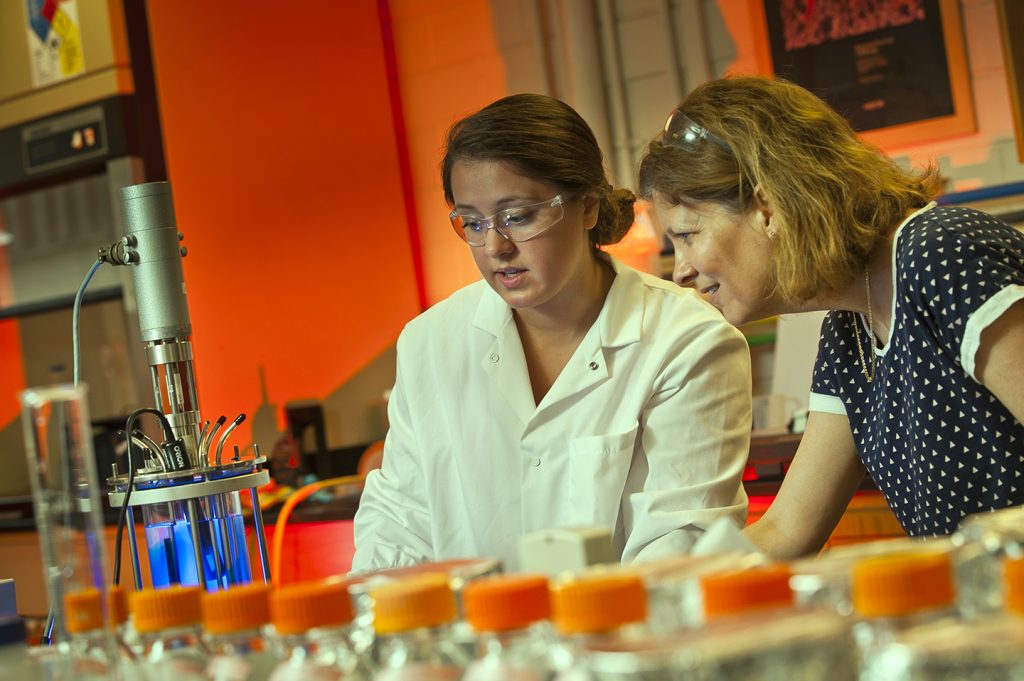Featuring Professor Piergiovanni, Chemical Engineering

Working with Professor Polly Piergiovanni on a Fluid Pump Flow experiment Clare Boothe Luce Scholar Rachel tenney ’18 pipets.
Chuck Zovko / Zovko Photographic llc
July 14, 2016
The Lafayette Teaching Excellence Newsletter showcases the instructional achievements of faculty to make teaching and learning more visible at the College. This inaugural issue features Dr. Polly Piergiovanni, Acting Department Head and Professor of Chemical Engineering. Professor Piergiovanni is the recipient of several teaching awards, with the two most recent being the Lafayette B. Vincent Viscomi Engineering Prize for Excellence in Mentoring and Teaching (2015), and the Chemical Engineering Education Corcoran Award presented each year to the author of the most outstanding article published in Chemical Engineering Education (2018).
When asked what she likes most about teaching at Lafayette, Dr. Piergiovanni indicated, “I like it primarily because I get to know the students, [there are] small classes, a lot of interaction, both with advisees, research students, and classroom students. So, I like the personal level of all of it.” Regarding her teaching, Professor Piergiovanni says, “In most classes, I don’t lecture much, maybe 10 – 20 minutes here and there. I have the students actively taking measurements, demonstrating what we just discussed or doing calculations in small groups. I am teaching in LeopardWorks this semester. It’s a wonderful new classroom. The tables are on wheels, [and] the chairs are stackable. It’s got water and electricity. I could not do what I am doing as easily if I didn’t have this classroom.”
The theme of Dr. Piergiovanni’s Introduction to Engineering course is food engineering. Similar to most of her other courses, Professor Piergiovanni first teaches theory, and then sets up a classroom environment where students engage in activities that test the theory. She describes one class session:
“Today we were making edible thin films. I have starches that the students combine with different foods, heat and spread on a silicone sheet and dehydrate to make an edible, thin film. They combine four foods with each of three starches to make 12 different films to see if the theory I presented earlier works in practice. Of the 12 films, about four of them will work and eight won’t, and that’s what the theory predicts. Then, the students will measure mechanical properties (stress and strain) of the four films that worked. So, most of the courses I teach are not lab courses, but all of them have this element of hands-on activities in them, and that’s what I love.”
Read More About Dr. Piergiovanni’s Prestigious Teaching Award